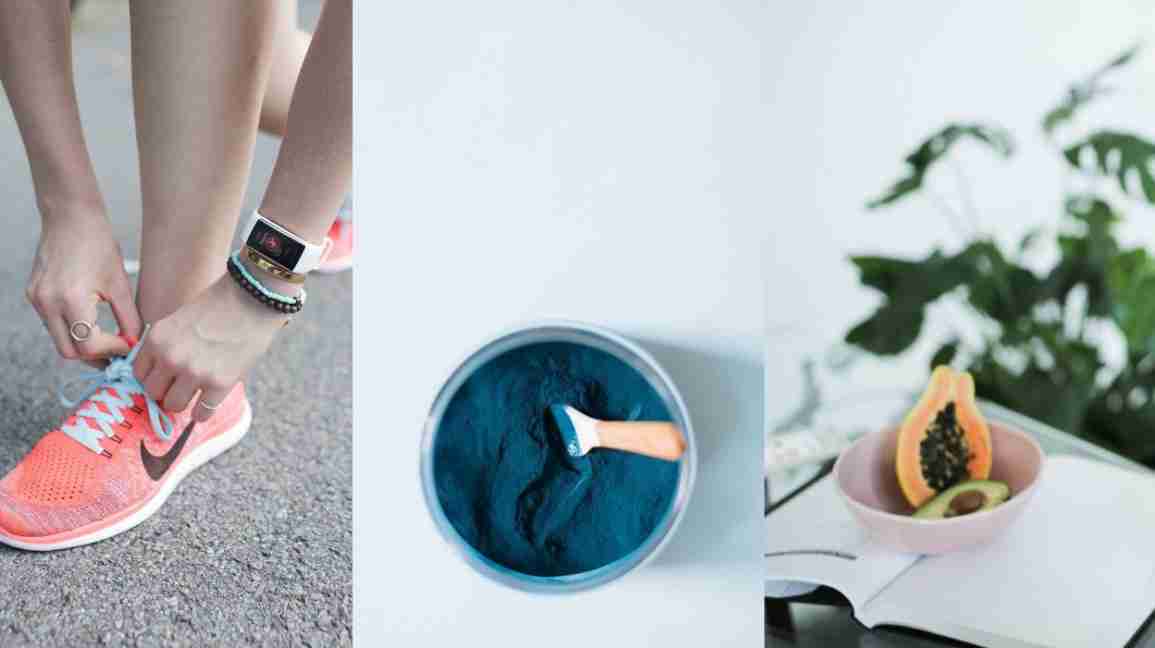Before you order that side of chili fries, read this.
Even the healthiest people go through phases where too much work, too many parties, or a packed social calendar leads them to overindulge on sweets, rich food, greasy burgers, or office snacks.
And if you’ve been working (and playing) hard, why not splurge a little, right?
Not so fast.
While the influx of late work nights, office happy hours, and weddings is brief, theeating patterns you develop during this time can turn into bad habits.
When you associate foods with events and occasions, you begin to adopt thoseemotional links every time you’re triggered. For example, every time you feel stressed or tired, you reach for a pint of ice cream out of comfort.
Happily, the solution to getting back on track after a period of overeating isn’t depriving yourself of food or signing on to a juice cleanse. Here are my tips to help you set healthy, realistic goals and address the underlying issues that come with overeating.
The all-or-nothing approach doesn’t work; it has never worked for anyone because it’s not sustainable.
One of the most common mistakes people make when they want to get back on track with a healthy diet is to deprive themselves of “unhealthy” foods they love.
Truth be told: the all-or-nothing approach doesn’t work; it has never worked for anyone because it’s not sustainable.
As a nutritionist-dietitian, I believe in practicing balance,listening to your body, and finding healthier ways to enjoy your favorite foods. Making healthy food swaps is one of the best ways you can still eat your go-to meals without missing them.
If macaroni and cheese is your favorite dish, give it a healthy twist by replacing cheese with a savory cashew cheese sauce to cut down on saturated fat. Swap out butter by using extra-virgin coconut or olive oil or grass-fed ghee.
Take things one day at a time and set small, realistic goals you can accomplish every day. Maybe your goal is to start your morning with a healthy breakfast or meal prep for at least one meal a week. This way you can measure progress every day rather than setting yourself up for failure because you’re too overwhelmed.
There’s a reason you don’t feel completely satisfied after eating sugary and fatty foods with empty calories. Those foods lack fiber and protein that keep your blood-sugar levels stabilized and your hunger at bay.
When you eat a fiber-rich diet filled with a variety of vegetables and fruits, whole grains, beans, and other plant-based proteins, you’ll fill up fast and stay fuller longer. In addition, many fiber-rich foods are rich in antioxidants that help fight inflammation in the body that’s caused by stress, high cortisol levels, and unhealthy eating habits.
I recommend my Stripped Green Smoothie to clients to help them reset after a period of overeating because it’s high in fiber, low in sugar, and packed with essential vitamins and nutrients.
Resisting the urge to order a side of fries with lunch? If you’re finding it difficult to say no, the best strategy for fighting compulsive eating is to create a healthy meal plan that includes breakfast, lunch, dinner, and even dessert.
And when those sweet or salty cravings hit, make sure you have healthy snacks in your arsenal. You’re less likely to get off track because you have a backup plan.
My advice for meal planning is to create a list of dishes you’d like to eat for the week and write up a shopping list of food and ingredients you’ll need.
Figure out your eating style: Do you like to mix and match ingredients for your meals, or do you like to follow recipes? If you like to mix and match ingredients, write a list of your go-to foods and how you’d like to pair them.
And if you prefer sticking to recipes, note foods you’ll need to cook up for the dishes. Make sure to take stock of things you already have at home so you avoid wasting food.
By creating a shopping list of foods you need, you also avoid wandering around aimlessly at the store, which can tempt you to add unhealthy foods you don’t need to your cart.
When you embrace your imperfect eating habits, you learn what your challenges and temptations are and can create strategies around them.
Journaling is one of my go-to strategies for everything from relieving stress to goal setting to creating mindfulness shifts.
If you’ve been overeating, there’s no better way to stay accountable, and I don’t just mean writing down everything you eat. Take journaling as an opportunity to also jot down how you feel when you eat these foods, what makes you feel off track, and what small steps you take every day.
It’s important to write about the good things — like the healthy salads and snacks you’ve made — but also to write about your challenges.
When you embrace your imperfect eating habits, you learn what your challenges and temptations are and can create strategies around them. So, the next time that donut craving hits, you’ll be aware of what triggered that craving and can squash it fast.
Nutrition and fitness go hand in hand. You can’t have good health without both, which is why incorporating exercise into your routine is so important.
When you’re stuck in a pattern of overeating, your metabolism slows down and your body isn’t able to use energy efficiently because you’re consuming more calories than you’re using.
Working out can rev up your metabolism not only to burn calories but also to train your body how to use carbs efficiently and to use fat for fuel.
There are emotional and mental benefits of exercising, too. Taking a walk when you’re stressed out can help you reset and evaluate your choices when you’re tempted to indulge or overeat.
Overeating isn’t something to beat yourself up about. It’s human!
The most important thing is to be aware of your relationship with food and to know how to get back on track after a period of overindulgence.
McKel Hill, MS, RD, is the founder ofNutrition Stripped, a healthy living website dedicated to optimizing the well-being of women all over the globe through recipes, nutrition advice, fitness, and more. Her cookbook, “Nutrition Stripped,” was a national best-seller, and she’s been featured in Fitness Magazine and Women’s Health Magazine.



